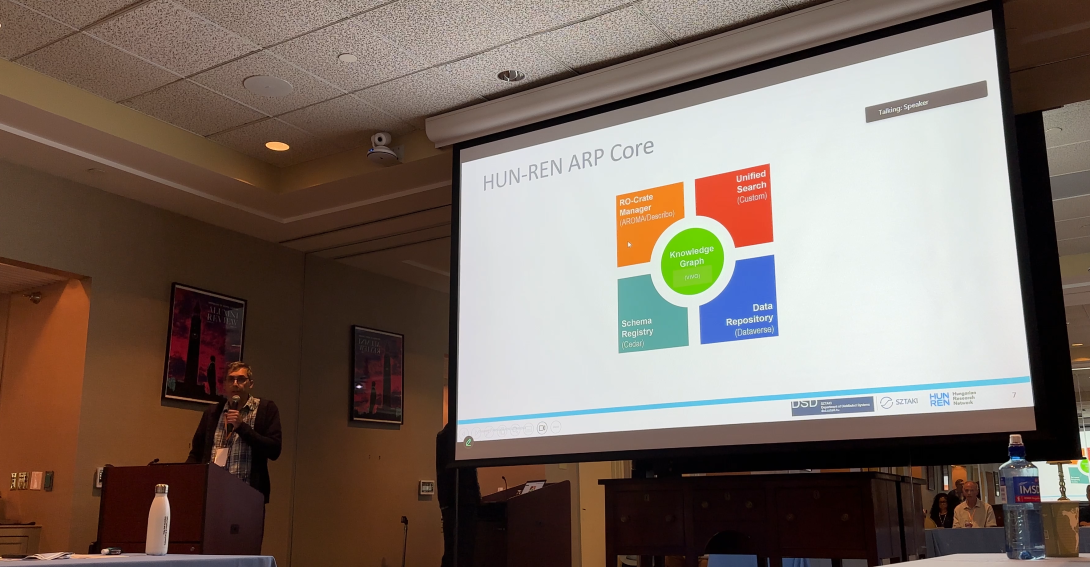Balázs Pataki, lead developer of the HUN-REN ARP project, presented CEDAR integration in the context of Dataverse-based ARP at the 2025 Dataverse Community Meeting (DCM) in North Carolina and at Stanford University. His interview about the presentations in the US can be read in its entirety on the SZTAKI website. (Link at the bottom of the page.)
„The primary purpose of the trip really was to attend DCM and give a talk, but before that I’d already been collaborating on ARP with the CEDAR developers, who invited me to “drop in” at Stanford.” CEDAR, which is a key component of ARP, was originally developed at Stanford for medical, biological purposes. ARP integrated CEDAR into Dataverse, offering a simple visual editor for schema creation.
At Stanford „What interested them most was how we use the CEDAR-built schemas inside Dataverse, because CEDAR wasn’t originally designed for use in other systems.”
Pataki's presentation on the integration of ARP and CEDAR at the DCM organised by Harvard was also a great success. Based on an earlier online demo, „they said this was such an important extension that it should be shown to the whole Dataverse community.”
AI was also a central theme of the conference. As Pataki pointed out, “everyone is looking for ways to automate the repetitive, sometimes tedious parts of data deposit.”
Looking to the future, Pataki said: „Our goal is to make our CEDAR and RO-Crate work available at the Ddataverse Marketplace, spreading the metadata methodology we developed in ARP.” In preparation for the DCM in Barcelona in 2026, he added that the goal is to have the SZTAKI developments back into the official release of Dataverse and CEDAR by then. „It really seems that the road from Stanford to Harvard leads through Hungary, through ARP and SZTAKI.”
